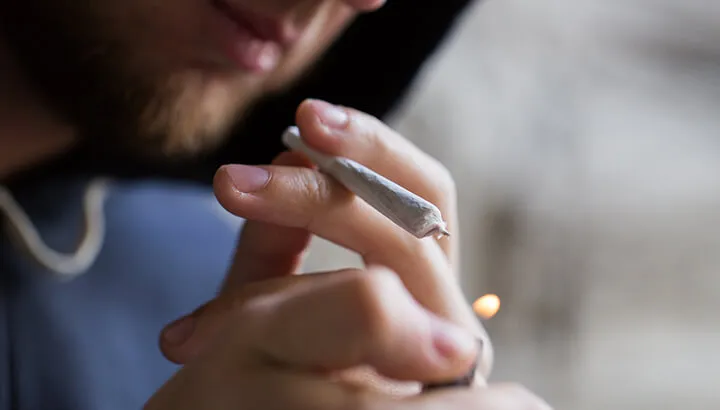The use of marijuana, both medicinal and recreational, is becoming more and more accepted across the United States. This once demonized natural substance is now slowly earning its place as a potent medicine, and as an increasingly commonplace recreational activity. While progress is slow, many state governments are becoming more tolerant of weed and its users.
As of the November 2016 election, eight states have legalized the use of recreational marijuana. A handful of other states are considering such measures. Over half of states (28) allow marijuana to be prescribed for medical use. So, if you live in one of these states, chances are, you’ve seen it around. Maybe you’ve used it for a medical condition, maybe you’ve used it for recreation, or maybe you’ve been wondering if it’s something that could be beneficial to you.
One thing that’s important to know about marijuana: it may affect you differently based on your gender. Research has shown that cannabinoids, the active compounds found in marijuana, affect men differently than they affect women. While some effects are similar, others vary.
The research on gender
Regarding these differences, the authors of a 2010 study published in the British Journal of Pharmacology wrote:
“In humans as in animals, males and females are dissimilar in their genetic and hormonally driven behaviour; they process information differently, perceive experience and emotions in different ways, display diverse attitudes, language and social skills, and show sex-related differences in the brain anatomy and organization… cannabinoids have been shown to exert sex-dependent effects also in other physiological and behavioral aspects, such as food intake and energy balance (more evident in males), or anxiety and depression (more evident in females).”
Read on to discover how consuming marijuana can affect men and women differently.
How marijuana impacts men

The following are a few ways that marijuana impacts males and females differently:
- Overall, men tend to use higher amounts of marijuana than women.
- Men tend to use marijuana more frequently.
- Men are more susceptible to the “munchies,” or the tendency to crave foods after imbibing marijuana.
- In men, using marijuana tends to lower sexual desire shortly after consuming it.
- Men may be more likely to experience psychosis after using marijuana. However, this is not yet proven and is the subject of quite a bit of debate. Rare cases of marijuana-related psychosis seem to have underlying genetic factors.
How marijuana impacts women
- Turns out, women are more likely to experience anxiety after marijuana than men.
- Women are more likely to get dizzy after using marijuana that men.
- Women may become more forgetful than men after taking marijuana.
- After taking low doses of marijuana, women may experience heightened sexual desire. However, in larger doses, sexual desire may decrease.
- Using marijuana to combat chronic pain may be more effective in women than in men.
- Women may be particularly sensitive to a marijuana high when they are ovulating.
- Women may become tolerant to THC (the active compound in marijuana that gets you “high”) more quickly than men. This may lead them to use greater quantities in order to achieve the same effect.
- Women may experience stronger withdrawal symptoms from marijuana. In both sexes, these are mild. They include irritability, decreased appetite and trouble sleeping. These symptoms generally pass before too long.
Some benefits of medicinal marijuana
Regardless of how you feel about its use as a recreational substance, evidence is strong that marijuana has significant medical benefits for a wide array of conditions. The following are just a few ways that this little green plant can do a lot of good:
- Marijuana has been found to improve a sense of well-being in people suffering from various chronic medical conditions.
- Marijuana can help to relieve chronic pain. While this effect may be more potent in women, it works for both genders.
- Marijuana can help alleviate symptoms of Irritable Bowel Syndrome (IBS).
- Weed can help ease the pain of headaches and migraines.
- Cannabis has been found to help ease the pain of fibromyalgia.
- Pot may help to improve symptoms of post-traumatic stress disorder (PTSD).
- Marijuana has been found to help reduce muscle spasms in people suffering from multiple sclerosis (MS).
- Marijuana and cannabis oil can help to reduce seizures in individuals with epilepsy and other conditions. This has been remarkably effective in many cases involving children.
- Marijuana can help to reduce nausea and vomiting, making it a useful medicine for cancer patients undergoing chemotherapy.
- Marijuana may help to promote restful sleep.
Aside from these, it has been found that it is not possible to overdose on marijuana and there have been no deaths attributed solely to this substance. On top of that, marijuana shows real promise in replacing opioid drugs for many chronic pain conditions. Opioid drugs do kill and we’re in the middle of a national epidemic. So, if this natural substance can be of help, that is a wonderful thing.
– Tanya Mead

